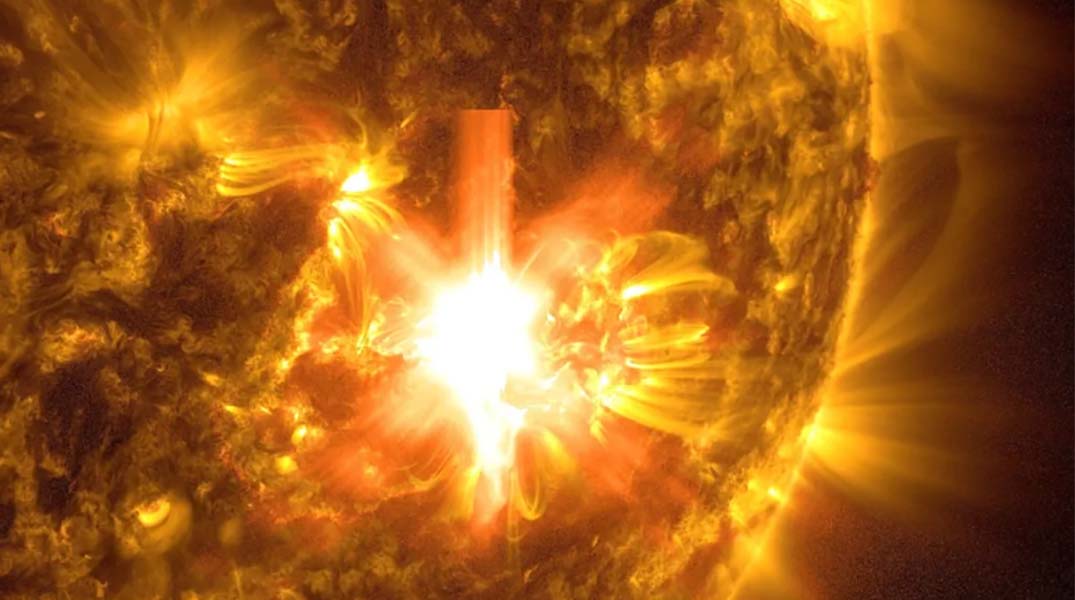The Aurora Borealis and Aurora Australis displays that played out across the globe this weekend were the result of a strong solar flare emitted from the Sun on Friday (10 May).
NASA’s Solar Dynamics Observatory, which watches the Sun constantly, captured this image of the event.
This flare is classified as an X3.9 flare. X-class denotes the most intense flares, while the number provides more information about its strength.
Solar flares are powerful bursts of energy. Flares and solar eruptions can impact radio communications, electric power grids, navigation signals, and pose risks to spacecraft and astronauts.
The flare – or coronal mass ejections (CMEs) – triggered a geomagnetic storm that peaked on Friday evening and will continue to affect the Earth until tomorrow (14 May), according to NOAA.
CMEs are explosions of plasma and magnetic fields from the sun’s corona. They cause geomagnetic storms when they are directed at Earth. Geomagnetic storms can impact infrastructure in near-Earth orbit and on Earth’s surface, potentially disrupting communications, the electric power grid, navigation, radio and satellite operations.
According to NOAA, a geomagnetic storm is a major disturbance of Earth’s magnetosphere that occurs when there is a very efficient exchange of energy from the solar wind into the space environment surrounding Earth. These storms result from variations in the solar wind that produces major changes in the currents, plasmas, and fields in Earth’s magnetosphere.
Featured picture: NASA’s Solar Dynamics Observatory captured this image of a solar flare – as seen in the bright flash toward the middle of the image – on 10 May 2024. The image shows a subset of extreme ultraviolet light that highlights the extremely hot material in flares and which is coloured in gold.
Credit: NASA/SDO

